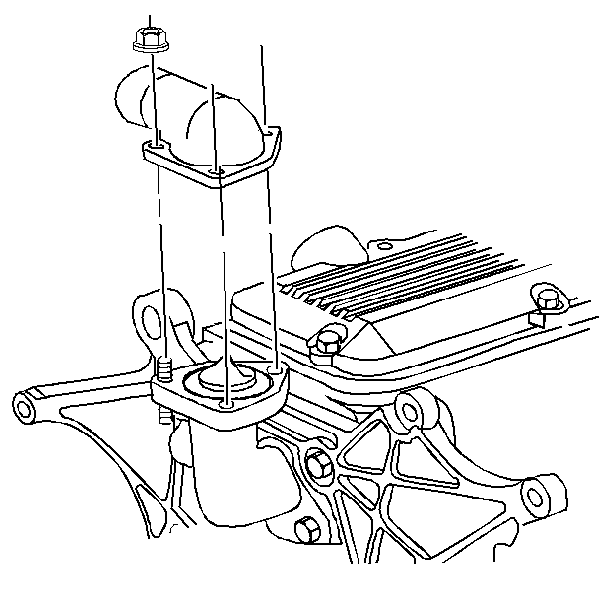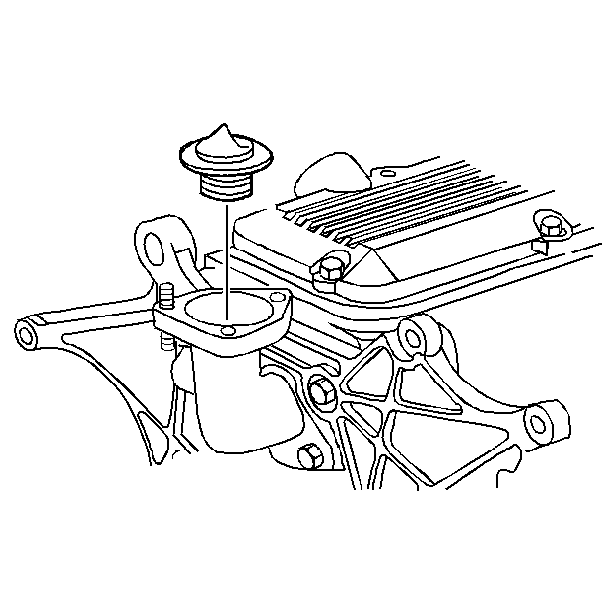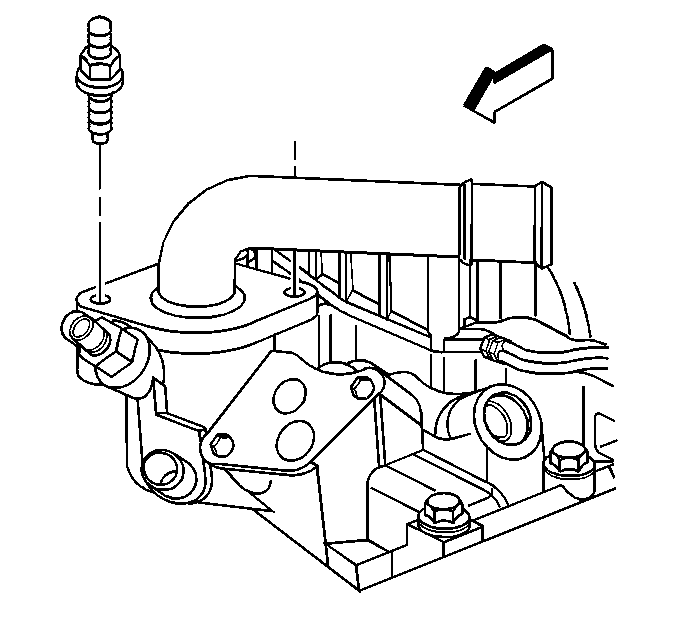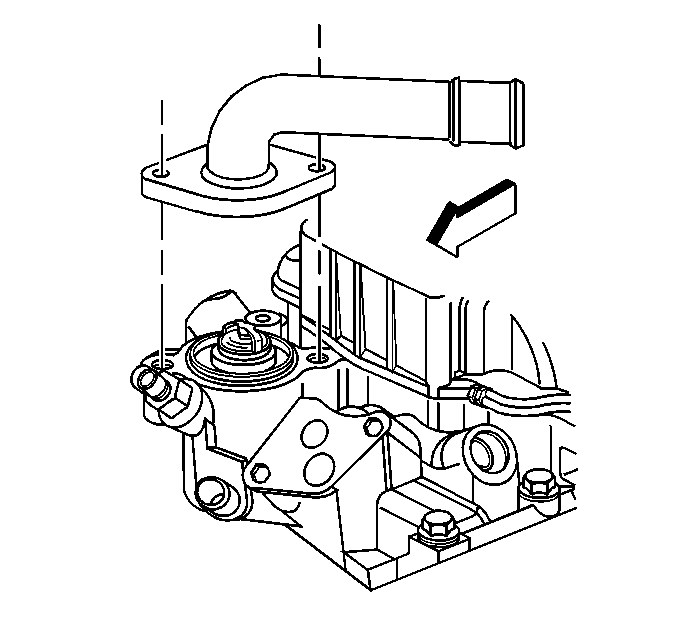Engine Coolant Thermostat Replacement Testing
Thermostat Testing
The coolant thermostat can be tested using a temperature (tempil) stick. The temperature stick is a pencil like device. It has a wax material containing certain chemicals which melt at a given temperature. Temperature sticks can be used to determine a thermostat's operating range, by rubbing 87°C (188°F) and 97°C (206°F) sticks on the thermostat housing. The marks made by the sticks should melt when coolant temperatures of 188°F and 206°F are reached, respectively. These temperatures are the normal operating range of this thermostat, fully opened at 206°F and fully closed below 188°F. Replace the thermostat when it operates outside of this range.
Engine Coolant Thermostat Replacement 2.2L
Removal Procedure
- Remove the necessary amount of coolant from the radiator. Refer to Draining and Filling Cooling System .
- Remove the upper radiator inlet hose.
- Remove the coolant outlet nuts.
- Remove the coolant outlet from the engine.
- Remove the thermostat gasket, if used.
- Remove the coolant thermostat.
Caution: Do not remove the radiator cap while the cooling system is hot. Serious personal injury may result. Only remove the radiator cap from a cool engine.



Cleaning Procedure
| • | Clean all the parts. |
| • | Clean all the sealing surfaces. |
Diagnostic Aids
Refer to Temperature vs Resistance table to check for a skewed ECT sensor. A skewed ECT sensor may cause the temp lamp to illuminate without an actual overheating condition.
Engine Coolant Thermostat Replacement 4.3L
Removal Procedure
- Remove the necessary coolant from the radiator. Refer to Draining and Filling Cooling System .
- Remove the upper radiator inlet hose.
- Remove the coolant outlet bolts.
- Remove the coolant outlet from the lower intake manifold.
- Remove the thermostat gasket.
- Remove the coolant thermostat.
- Clean all the sealing surfaces of the coolant outlet.
- Clean the sealing surface on the lower intake manifold.
Caution: Do not remove the radiator cap while the cooling system is hot. Serious personal injury may result. Only remove the radiator cap from a cool engine.



Installation Procedure
- Install the coolant thermostat in the lower intake manifold.
- Install a new gasket (if used). Otherwise, place a 3 mm (1/8 in) bead of RTV sealer or equivalent) at the groove on the coolant outlet sealing surface.
- Install the coolant outlet on the lower intake manifold.
- Install the attaching bolts.
- Install the radiator inlet hose.
- Fill the cooling system with specified coolant and concentration. Refer to Radiator Replacement .
- Inspect all sealing surfaces for leaks after starting the engine. Refer to Radiator Leak Testing (On and Off Vehicle) .

Important: To prevent leakage, thoroughly clean all parts and sealing surfaces.


Tighten
Tighten coolant outlet bolts to 19 N·m (14 lb ft).
Notice: Use the correct fastener in the correct location. Replacement fasteners must be the correct part number for that application. Fasteners requiring replacement or fasteners requiring the use of thread locking compound or sealant are identified in the service procedure. Do not use paints, lubricants, or corrosion inhibitors on fasteners or fastener joint surfaces unless specified. These coatings affect fastener torque and joint clamping force and may damage the fastener. Use the correct tightening sequence and specifications when installing fasteners in order to avoid damage to parts and systems.
